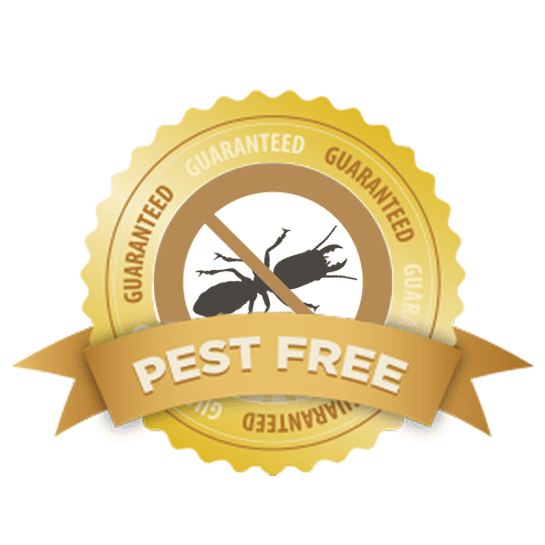A1 Bed Bug Exterminator Charlotte - Reliable and Economical Services
A1 Bed Bug Exterminator Charlotte - Reliable and Economical Services
Blog Article
Bed Pest Treatment Failure: Comparing Chemical Vs. Non-Chemical Solutions
In the realm of pest control, especially when handling the consistent problem of bed bugs, the option in between chemical and non-chemical therapy solutions can be a crucial one. Both techniques supply distinctive advantages and disadvantages, affecting factors such as efficiency, security factors to consider, and overall price. By examining the nuanced details of each technique, a clearer understanding of which path to seek in attending to a bed pest problem can be achieved.
Effectiveness of Chemical Treatments
Chemical therapies for bed pest infestations have been extensively identified for their potent and quick efficiency in getting rid of these parasites. When considering the effectiveness of chemical therapies, it is vital to comprehend that they can offer a detailed and quick remedy to a bed pest trouble.
Additionally, chemical treatments have the benefit of providing residual results, implying that they can proceed to eliminate bed pests even after the first application. This residual action is especially beneficial in combating any kind of potential re-infestations. In addition, the fast action of chemical treatments can bring alleviation to individuals dealing with serious bed pest infestations, enabling them to regain control of their home swiftly.
Security Worry About Chemical Solutions
One critical facet that needs careful factor to consider when making use of chemical options for bed pest treatment is guaranteeing the safety of owners and the environment. Direct exposure to specific chemicals utilized in bed bug therapies can lead to respiratory system issues, skin irritability, or other damaging responses, particularly in people with pre-existing conditions or level of sensitivities.
In addition, the environmental influence of chemical solutions is an additional significant consideration. Some pesticides made use of in bed bug therapies may be damaging to useful pests, wildlife, and ecological communities if they seep into the dirt or water supply. It is necessary to use chemical therapies sensibly, adhering to safety guidelines, and considering much less poisonous choices to minimize these risks and make sure the reliable and secure monitoring of bed bug invasions.
Benefits of Non-Chemical Techniques
Thinking about the potential safety and security concerns and ecological effect associated with chemical remedies for bed insect treatment, discovering non-chemical methods presents an encouraging choice with numerous unique benefits. Non-chemical therapies are ecologically pleasant, as they do not add to air or water pollution, making them a lasting option for parasite control.
Additionally, non-chemical solutions can be reliable in targeting bed insects, including hard-to-reach locations where chemical treatments may not permeate. Methods such as warm therapy, vacuuming, steam cleansing, and bed mattress encasements supply extensive removal without the usage of damaging chemicals. Moreover, non-chemical approaches can be much less disruptive, needing marginal preparation and permitting quicker reentry into dealt with locations. On the whole, selecting non-chemical bed bug therapy methods not only prioritizes safety and environmental security yet also makes certain reliable and detailed insect control.
Limitations of Non-Chemical Treatments

In addition, non-chemical therapies frequently call for numerous applications to achieve effective removal. This can be taxing and may not constantly assure complete elimination of all bed pests Related Site and their eggs, particularly in hard-to-reach or concealed places.
In addition, the success of non-chemical therapies heavily relies upon appropriate implementation and thoroughness, which can be challenging for individuals without expert experience. Inadequate application of non-chemical techniques might cause insufficient eradication, causing consistent infestations and the demand for extra therapies.
Therefore, while non-chemical treatments have their advantages, it is necessary to recognize these constraints and consider them when identifying one of the Resources most effective method for managing bed bug infestations.
Expense Contrast: Chemical Vs. Non-Chemical Options
Provided the restrictions connected with non-chemical therapies, a necessary element to examine in the context of bed insect administration is the cost comparison between chemical and non-chemical choices. Chemical treatments typically involve the application of insecticides by professionals, which can vary from $250 to $900 per space, depending upon the seriousness of the invasion and the size of the area to be treated. In contrast, non-chemical treatments like warmth therapy or heavy steam can be a lot more expensive, with costs ranging from $1,000 to $6,000 for an entire home. While the preliminary price of chemical therapies might seem reduced, several treatments may be called for to completely eliminate the problem, possibly increasing the overall price. On the other hand, non-chemical options might provide a more environment-friendly and sustainable solution, although they can be cost-prohibitive for some people. Eventually, when thinking about the cost of bed insect treatment options, it is necessary to consider the in advance expenses versus the effectiveness and long-lasting sustainability of the chosen approach.
Verdict

Considering the potential safety worries and ecological impact linked with chemical options for bed pest therapy, exploring non-chemical techniques offers a promising alternative with a number of distinctive advantages.Offered the restrictions connected with non-chemical therapies, an important element to review in the context of bed insect monitoring is the cost comparison between chemical and non-chemical options. In contrast, non-chemical treatments like warm therapy or vapor can be extra expensive, with costs varying from $1,000 to $6,000 for a whole home. While the first price of chemical treatments may seem lower, multiple treatments might be called for to totally eradicate the infestation, potentially enhancing the general expense.In verdict, when contrasting chemical and non-chemical bed insect treatment choices, it is important to think about efficiency, security, benefits, restrictions, and cost.
Report this page